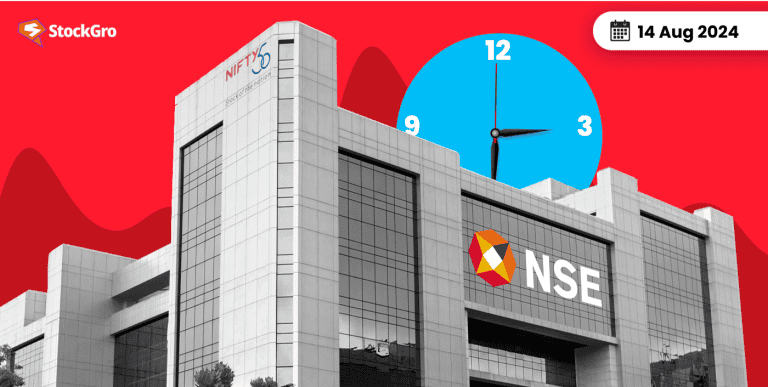
The landscape of stock market ownership in India has been experiencing significant shifts. For over a decade, foreign portfolio investors (FPIs) have been the dominant force in Indian markets, influencing the direction of market trends and investor sentiment.
However, recent data reveals a notable change in this dynamic, with domestic institutional investors (DIIs) and retail investors gaining ground. In this article, we delve into these evolving trends, focusing on the latest figures from the June 2024 quarter.
FPI ownership hits a 12-year low
As of June 30, 2024, FPI ownership in companies listed on the NSE has dropped to a 12-year low of 17.38%. This marks a decline of 34 basis points (bps) from the previous quarter, when their share stood at 17.72%.
The trend is even more pronounced in the NSE 500, where FPI ownership fell to 18.8%, representing a 30 bps decrease from the March 2024 quarter. The Nifty-50 index saw a sharper decline of 40 bps quarter-on-quarter (QoQ), with FPI holdings now at 24.5%.
You may also like: FII vs DII: definition, behaviour, impact, and comparison (stockgro.club)
Declining influence of FPIs
The influence of FPIs in the Indian market has been waning steadily. Since March 2021, FPI free float ownership has decreased almost every quarter, with only two instances of increases.
By June 2024, FPI free float ownership had fallen to 39%, down from a peak of 48%. This decline is significant, considering that FPIs were once the largest non-promoter shareholders in the Indian market.
DIIs and retail investors on the rise
In contrast to the declining FPI ownership, domestic institutional investors (DIIs) and retail investors have been increasing their stakes in the Indian stock market.
DIIs now account for a record-high 16.9% of the NSE 500 companies’ ownership, up by 30 bps from the previous quarter. This increase is part of a broader trend that has seen DII ownership rise steadily over the past few quarters.
Retail investors’ growing significance
Retail investors have also become an increasingly significant segment in the market. Although their ownership dipped slightly to 8.7% in the June 2024 quarter from their peak of 9% in March 2022, they continue to play a crucial role in counterbalancing FPI outflows.
This is particularly evident in the Nifty-50 index, where retail ownership remained stable at 8.1%, and small-cap holdings saw a minor increase of around 10 bps to 9.3%.
Self-reliance in Indian stock markets
The Indian stock market is moving towards self-reliance, with the share of DIIs expected to overtake that of FPIs in the coming quarters.
“For years, FPIs have been the largest non-promoter shareholder category in the Indian market, with their investment decisions having a huge bearing on the overall direction of the market. This is no longer the case,” said market experts.
DIIs, along with retail and high-net-worth individuals, have now been playing a strong counter-balancing role, with their share reaching an all-time high of 25.85% as of June 30.
Sectoral shifts in ownership
The June 2024 quarter also revealed interesting trends in sectoral ownership. DIIs increased their allocation most to the Commodities sector, raising it to 8.73% of their total holdings. Conversely, they decreased their allocation to the Energy sector, reducing it to 10.64% of their holdings.
FPIs, on the other hand, showed a preference for the Consumer Discretionary sector, increasing their allocation to 17.13%, while reducing their exposure to the IT sector to 8.09%.
Government and private promoter holdings
The share of the Government (as promoter) in listed companies increased to a 7-year high of 10.64% as of June 30, 2024. This increase is attributed to the strong performance of several public sector undertakings (PSUs).
In contrast, the share of private promoters declined to a 5-year low of 40.88%, continuing a downward trend that has seen their ownership fall by 428 bps over the last 10 quarters.
Also Read: India included in JPMorgan’s EMB index: What about it? (stockgro.club)
The future outlook: A balanced market?
The data indicates that the Indian stock market is becoming more balanced, with domestic investors playing a more prominent role. The FPI to DII ownership ratio, which was at an all-time high of 1.99 in March 2015, has now decreased to an all-time low of 1.07 as of June 30, 2024.
This narrowing gap between FPI and DII holdings suggests a shift towards a market that is less reliant on foreign capital and more influenced by domestic factors.
Also Read: How to Invest in US Stocks from India | StockGro
Midcaps and smallcaps: The new frontier?
The midcap and smallcap segments have shown resilience in the face of declining FPI ownership. In the June 2024 quarter, midcap holdings by FPIs increased by 22 bps to 16%, while smallcap holdings rose by 15 bps to 12.4%.
Similarly, DII ownership in these segments also saw increases, with midcap holdings rising by 28 bps to 16.5% and smallcap holdings by 16 bps to 12%.
Conclusion: A paradigm shift in ownership dynamics
The declining FPI ownership and rising DII and retail investor participation signal a paradigm shift in the ownership dynamics of the Indian stock market. As domestic investors continue to gain ground, the market is likely to become more resilient to global shocks and less dependent on foreign capital.
This shift towards self-reliance bodes well for the long-term stability and growth of the Indian market, providing a more balanced and sustainable investment environment.

